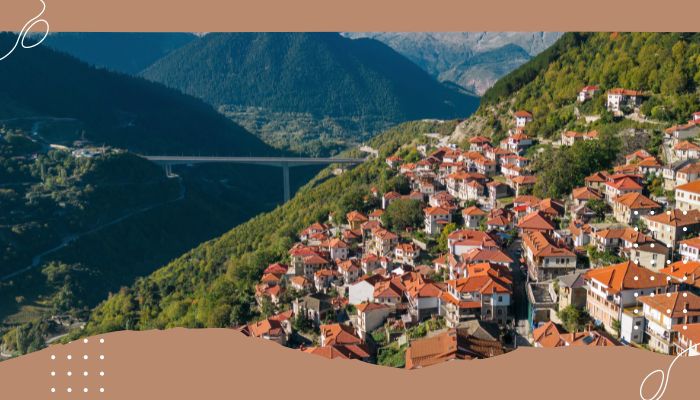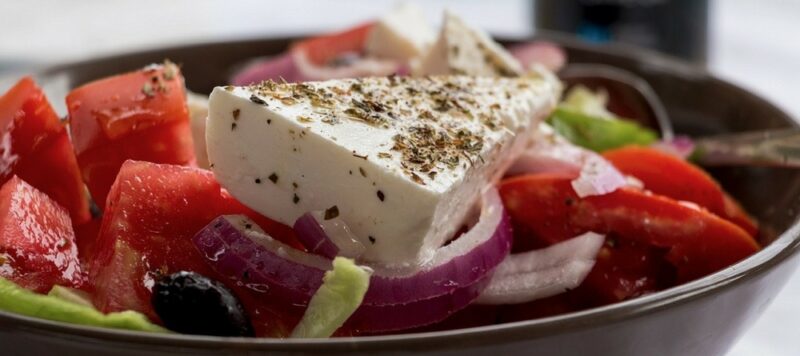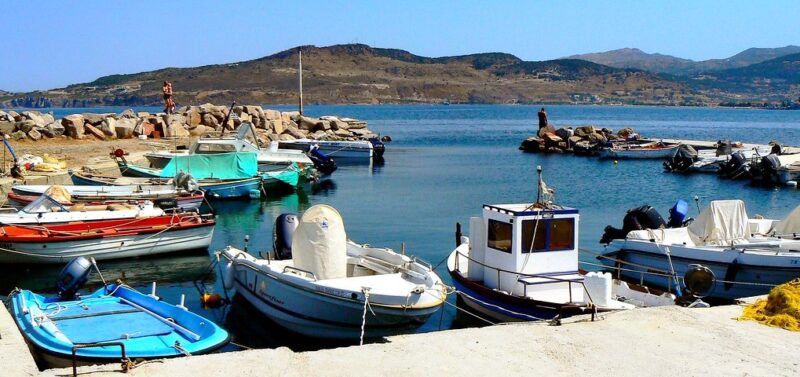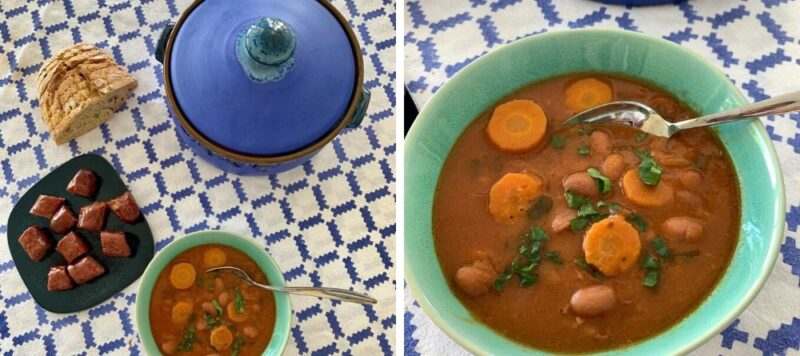You’re sitting on a terrace, dreaming ofa good cup of coffee in Greece. Simple, apparently? And yet, when the time came to place the order, all hell broke loose! You’ve pulled out your best Greek:“Enan cafe parakalo“… and now the waiter starts interrogating you with incomprehensible terms: sketo, metrio, frappé, zesto, fredo, elliniko…. You’re distraught and end up with a small, tasteless cup of coffee, even though the one you were craving was the one next to you!
Coffee in Greece today
Greeks love coffee… Today they taste it:
- In the morning, before going to work. Coffee is then bought on the road to take away. You’ll see many people in the metro, in their car, at the office with a plastic cup containing the precious nectar.
- On the terrace, at any time of day, even late at night. Coffee tasting is a leisurely affair, providing an opportunity for long hours of conversation with friends and family.
- At the kafenio, men enjoy traditional Greek coffee in the late morning and early evening.
- On the other hand, the tradition of coffee at the end of a meal is not very widespread. In fact, some taverns don’t serve coffee at the time of service.
Find our best cafés in Athens in our Going Out section (our top restaurants, cafés and bars in Athens).
Traditional Greek coffee
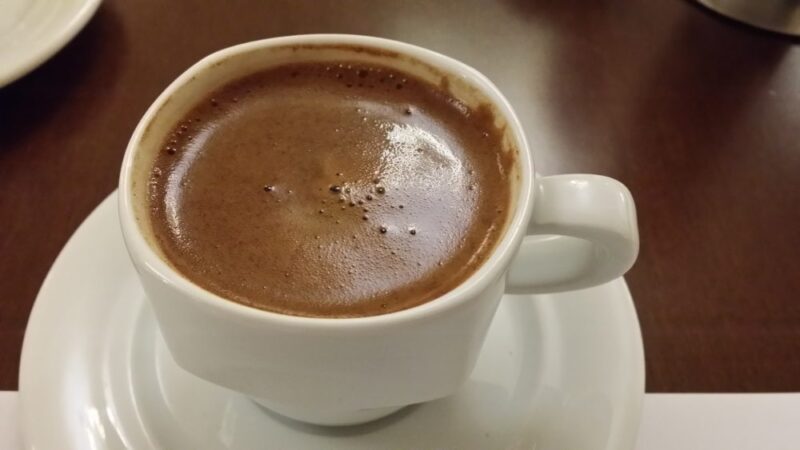
The tradition of Greek coffee stems from Ottoman culture, which strongly influenced Greek culture, particularly after the mass arrival of Greeks from Turkey in 1922.
Traditionally Greek coffee, called Ellinikos is served in a tiny coffee cup. It is prepared in a“briki“, a tiny saucepan into which coffee and water (and possibly a little sugar) are poured. Once boiling, the coffee is poured into the cup. Just wait and be patient, so that the coffee grounds settle to the bottom! You can then enjoy this coffee with its distinctive taste.
Hot coffee
Here are the main coffees on offer:
- Ellinikos: traditional Greek coffee (see above). It’s not filtered, so you need to let it stand to avoid drinking the marc, which normally remains at the bottom of the cup.
- Espresso: straight from Italy. It is usually served very close together. If you want it longer, ask for a Lungo. If you’d like a double, ask for a Diplo, but be careful, it’s high in caffeine, since it’s the equivalent of two espressos.
- Cappuccino: with its creamy foam and pretty caramel color, the Greeks love it. It has become a best-of. If you want it hot, be sure to specify Capuccino Zesto.
- Gallikos: literally “French”. It’s actually the equivalent of our filter coffee.
For each of these coffees, the waiter will ask if you want sugar(zachari).
- Sugar-free: sketo
- Medium sweet: metrio, corresponds to a spoonful of sugar
- Very sweet: glyko, corresponds to two spoonfuls of sugar
Cold coffee
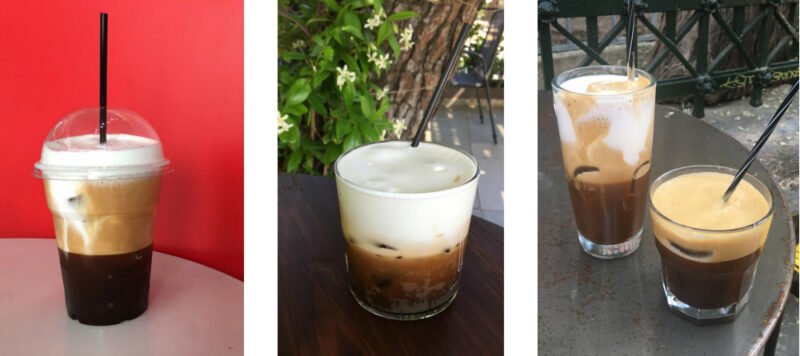
When the weather’s nice, cold coffee becomes an essential part of the Greek coffee scene. Here too, there are many variations.
- Espresso fredo: an espresso served on the rocks. In the same way as hot, you can ask for double Diplo.
- Capuccino fredo: my personal favorite. As with espresso, ice cubes are added to make it cold.
- Frappé: this is a cold, iced soluble coffee, as the name suggests. Coffee lovers may be a little disappointed.
In the same way as for hot, you’ll be asked for the sugar level: sketo, metrio or glyko.
If you had to remember just three things about ordering a coffee in Greece
- If you want a“French-style espresso“, ask for an Espresso Lungo zesto.
- We can’t resist the Fredo Metrio cappuccino, a cold, slightly sweet cappuccino (see photo).
- Experience the unique taste of traditional Greek coffee, a tribute to patience and an art of living.
- Do you like Greek food? Would you like to learn how to make Greek coffees at home?
Sophie B.

